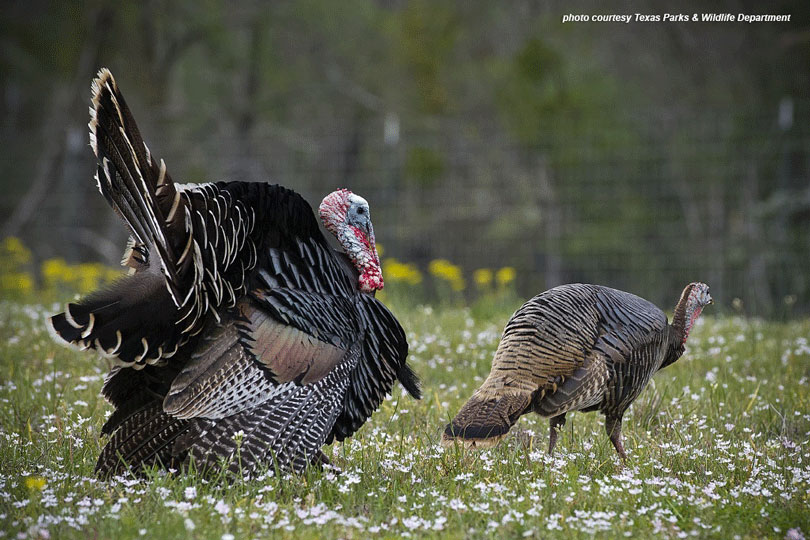By Jennifer Dorsett
Field Editor
Fall turkey hunting season in Texas begins Nov. 7, and hunters’ prospects look promising, according to Texas Parks & Wildlife Department (TPWD) Wild Turkey Specialist Justin Hardin.
Trapping data from 2019 and 2020 indicate a healthy and sizeable bird population, Hardin said.
Of the three subspecies of wild turkeys present in the state—Eastern wild turkeys, Merriam’s and Rio Grande, the Rio Grande is the most abundant.
“There are going to be a lot of two-year-old birds out there this year, which is always great for both fall and spring hunting,” Hardin said in an interview with the Texas Farm Bureau Radio Network. “In the end, I think we had a decent hatch this past spring and summer and pretty good recruitment and early nesting effort. So, we should be seeing quite a few birds across most of the Rio Grande range.”
He noted turkey hunters should take care to follow all regulations when hunting in one of the 178 of 254 Texas counties that have wild turkey seasons. Hunters should also ensure they have their upland game bird endorsement, which is included in any combination hunting license, but not a general hunting license purchased in Texas.
“We have a one-gobbler season in a 10-county region east of I-35, and those are spring-only seasons. So, just make sure that the county you plan to hunt in has an open season. Definitely pay attention to that so you’re not fall hunting in a place that doesn’t have fall seasons,” Hardin said. “If you’re hunting in a county that has a fall season, you have a four-bird annual bag limit, and that begins Sept. 1. So, most hunters should have four tags on their hunting license. But if they want to go back in the spring, they’re still working on that same set of four tags.”
In Texas, turkeys can be hunted from 30 minutes before sunrise until the time of sunset.
Hardin said it is unlawful to shoot birds that are roosting at any time, but it is legal to harvest them on the ground if it’s within those daylight hours outlined by TPWD.
All turkeys must be tagged immediately, Hardin said.
He recommends tagging a harvested turkey on the leg, although Texas law allows the tag to be attached anywhere on the turkey where it will not be damaged or lost during transportation or handling.
Maintaining proof of sex is mandatory in the state of Texas because some counties allow the harvesting of bearded hens, and other counties allow hunters to take any hen. Hardin noted hunters should hold onto the beard of any male turkey and a section of any bearded hen’s breast skin in addition to the beard.
“You can take those legs and the beard if you want to process that bird, put the meat in the cooler, but maintain the beard,” he said. “If it’s a bearded hen, we can tell sex of the birds based off the feather coloration on those breast feathers that come with a beard. So, maintain that, and that way we’ll know what you’ve harvested if you’re approached by a game warden.”
The most important thing a hunter can do is to follow the law, be safe and enjoy the experience, Hardin said.
“We have a lot of opportunity for hunters in Texas, so go take advantage of it if you can. Our hunter population is trending downward, but our harvest success rate in turn has increased significantly. If you look back at 2000, people had about a 35-36 percent success rate in pursuing turkeys. But it’s up over 50 percent these days, especially in spring turkey hunters,” Hardin said. “Over the past decade, generally, we’ve seen a growing population of turkeys. Turkeys aren’t pursued as hard as they are in some of the Southeastern states, so generally our harvest rates are fairly low in Texas. I think that’s one of the reasons why Texas is a destination state for a lot of folks to come turkey hunting.”
More information on hunting wild turkeys in Texas, including all TPWD regulations, is available here.

